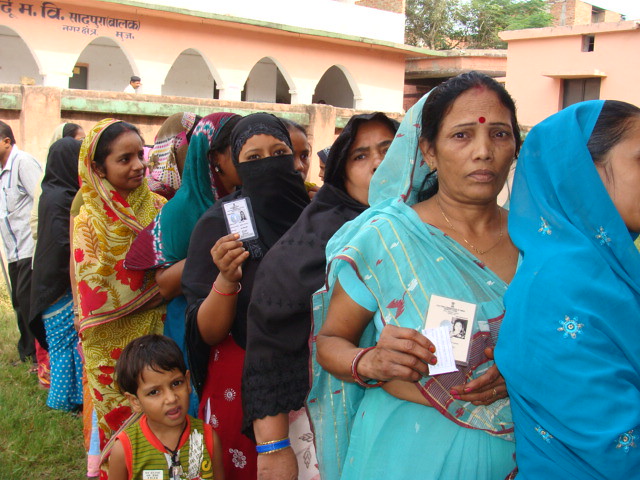By Soroor Ahmed, TwoCircles.net,
There is a general perception that the role of youths, especially of the age group of 18-25 or -30, is very crucial in deciding the fate of political parties in elections. But this issue needs to be discussed in proper perspective.
In this era of information technology they may be playing a key role in building up an environment in social media in favour or against any party. But so far as exercising adult franchise is concerned the story is very different. Actually the percentage of women voters’ turn-out are rising at a much rapid pace than youths for several obvious reasons.

In several states, for example Bihar, the first time or second time male voters actually get little opportunity to vote on the polling day. This is because of mass migration of this age group.
If the youths are the most garrulous group of voters––on social media or otherwise––it is women who form the strongest silent voters. This may happen once again in Bihar, where five phases of polls have been announced.
When a large number of women turned out to vote in the 2010 Assembly election (just below 52 per cent) in the state the media came up with several theories. It was attributed to their empowerment at the panchayat level and distribution of bicycles to school-girls by chief minister Nitish Kumar. But when the turnout of women in 2014 Lok Sabha election was equally better they had no new reason to offer.
The truth is something different. Take a survey of any village or township and one can easily notice steady decline in the number of young male force. Only children, women and old men would be found in most of them. That is why long queues of women voters are often seen outside the booths.
The youths––and even middle-aged men––move to other states or even go abroad––either to study or earn or both. There is little chance for most of them to be present on the polling day unless there is a long vacation. Some of these first-time voters do not even get opportunity to obtain the voters’ I-card or any other proof of identity.
There is another type of migrants who move within the state. They may return to their native place––where they are actual voters. But during the election time when most vehicles are seized for the poll duty travelling is not so easy.
These seasonal or temporary migrants are very different from those people of Bihari origin settled elsewhere and enrolled in the voters’ list there.
The number of this floating mass of farm labourers and students run into millions. There is no actual figure as the outflow is a constant process.
The agricultural labourers, mostly young, who migrate to Haryana, Punjab and West Uttar Pradesh start returning to their homes after the harvesting season is over. It mostly coincides with Diwali or Chhath, that is why they add to the rush in trains all over north India during this period. As polling dates fall between October 12 and November 5 it is not possible for an overwhelming number of migrants to reach their home to participate in the election process.
Students too may be deprived of their opportunity to vote––notwithstanding Durga Puja––as there would be no election between the second and third phases––that is October 16 and 28. They can vote at their native place only if they extend their DP vacations.
Apparently, one may find thousands of youths any time in any street of urban centres of Bihar, for example in Patna, which goes to poll on October 28. But a cursory survey would reveal that an overwhelming number of them are from other places and are not actually the voters here. The original youth voters of Patna (or other urban centres) have shifted to Delhi, Bangalore, Hyderabad, Mumbai or are working in the farm land or industries of western and northern Indian states.
Of late even young girls are migrating, mostly to study or do some white-collared jobs in software industries, banks etc. Their percentage is small, yet still rising.
The myth of young voters woven in the last few years need to be exploded and distinction should be made between actual voters and those indulging in tit-for-tat game in the social media.
—
Soroor Ahmed is a Patna-based freelance journalist. He writes on political, social, national and international issues.

